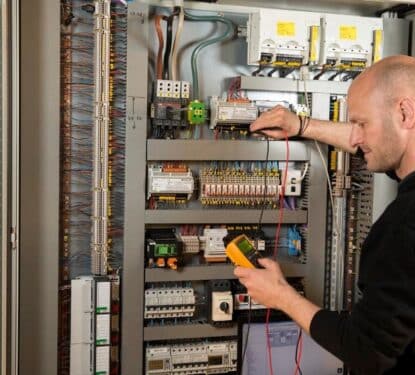The largest portion of a home’s energy consumption is attributed to its Heating, Ventilation and Cooling system (HVAC). Since the early 1900s, programmable thermostats have been studied as a potential tool to achieve energy savings in the home.
However, many studies have shown that conventional programmable thermostats are not used to their full potential due to several factors including; difficulty using interfaces, lack of understanding of how HVAC systems function and a trend of fading user interaction with the thermostats over time. To overcome this, Smart thermostats were created that could detect the occupancy and usage trends of a household and auto-generate schedules; thus eliminating the need for users to program their thermostats.

High profile start-ups such as Ecobee and Alarm.com, as well as Google acquisition Nest, have developed smart thermostat systems, which not only optimise HVAC energy usage but also serve as focal points of smart home platforms.
However, researchers from the Universities of Virginia and Michigan have come up with a new technology to conserve energy in homes. “ThermoCoach” is an occupancy based self-programming thermostat with eco-feedback on energy usage. ThermoCoach uses an array of sensors to detect occupancy and energy usage patterns for a building and generates customised recommendations of thermostat schedules. A recommended schedule is then provided to users through an online interface.
These devices actually teach people how to be smarter about energy consumption. The team, led by Kamin Whitehouse, Commonwealth Associate Professor of Computer Science in the UVA School of Engineering and Applied Science, presented its research for an international audience yeserday at the Association for Computing Machinery's BuildSys conference in Seoul, South Korea.
"We don't want to make a smarter thermostat, we want to make smarter people" Whitehouse said. Indeed, studies indicate that feedback of energy consumption has the potential to keep homeowners engaged with the energy usage in their homes and motivates them to take action to reduce energy consumption.
ThermoCoach never controls the heating or cooling on its own. Instead it emails a range of suggested actions the homeowner can take, from small adjustments to the thermostat for modest savings to more drastic adjustments for larger savings. The key being that the user can then decides whether and how to act on the information, meaning he or she retains all control and responsibility for energy conservation.
The recent pilot study involved 39 homes in the Charlottesville area and was conducted in partnership with Trane, a national manufacturer of heating and cooling equipment. ThermoCoach was evaluated against conventional programmable thermostats and the Nest Learning thermostat through sensing systems that were installed for a period of three months. Results showed that ThermoCoach schedules reduced energy cost by 5%, while Nest schedules actually increased costs by 7% when compared to traditional programmable thermostats. Participants also stayed engaged and comfortable with the process throughout the trial.
[contact-form-7 id="3204" title="memoori-newsletter"]
"The way autonomous systems interact with humans is very complex, and we don't fully understand that relationship yet", Whitehouse said. "In some ways, autonomous systems can actually be detrimental. They can add complexity to our lives instead of simplifying them".
Whitehouse and his team believe that instilling a sense of accountability can bring about energy savings and benefit the user experience. "Engaging the user and returning that sense of responsibility is one of the key principles behind the ThermoCoach design," said Mark Newman, associate professor at the University of Michigan and a collaborator of Whitehouse on a similar project.
Now, the teams from University of Virginia and the University of Michigan are planning for a longer study that will cover multiple seasons and allow the team to observe human reactions to ThermoCoach over a longer period of time. They even believe the technology in ThermoCoach could be adapted to other applications of energy conservation, such as lighting.
The transition to LEDs for lighting and thermostats have come at the same time as the development of the Building Internet of Things (BIoT) that, according to the latest Memoori report, is about to “disrupt the building automation systems (BAS) industry and open up the possibility for lighting control to play a much more important role”.
Be it through lighting or HVAC or both and others, energy efficiency in buildings is a fundamental element of the IoT and smart building movements we are currently experiencing. However, greater levels of automation and system-based learning may not be the best path for energy savings nor user comfort. Rather than creating more intelligent technology to think for us, we could be utilising our intelligence to make best use of all sensors, both technological and human.



